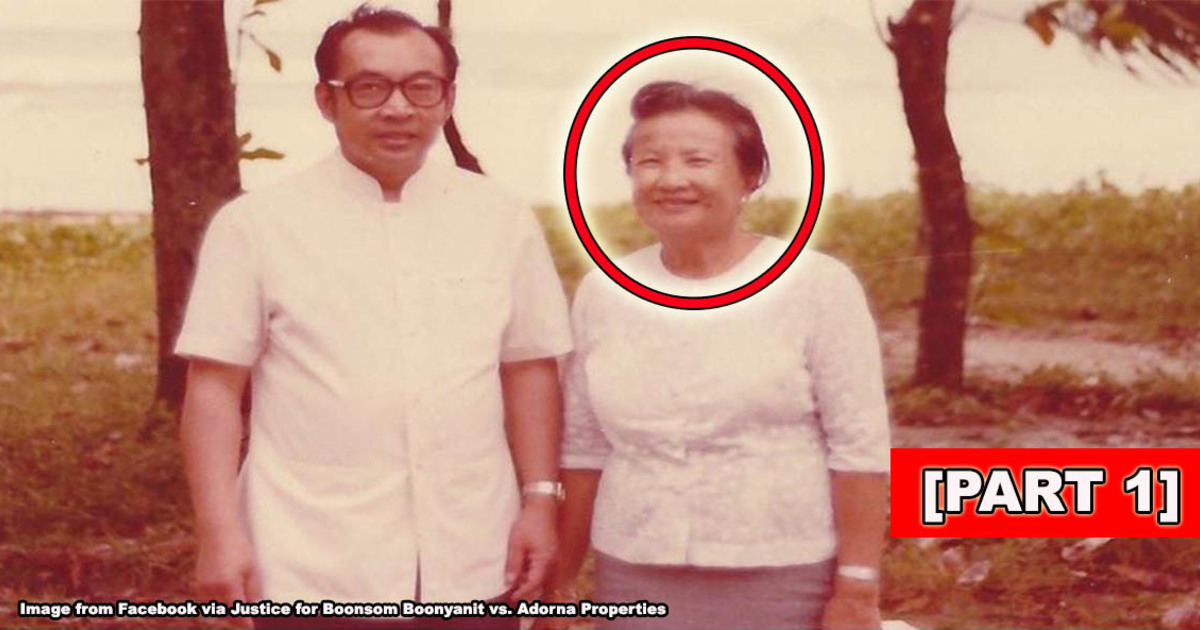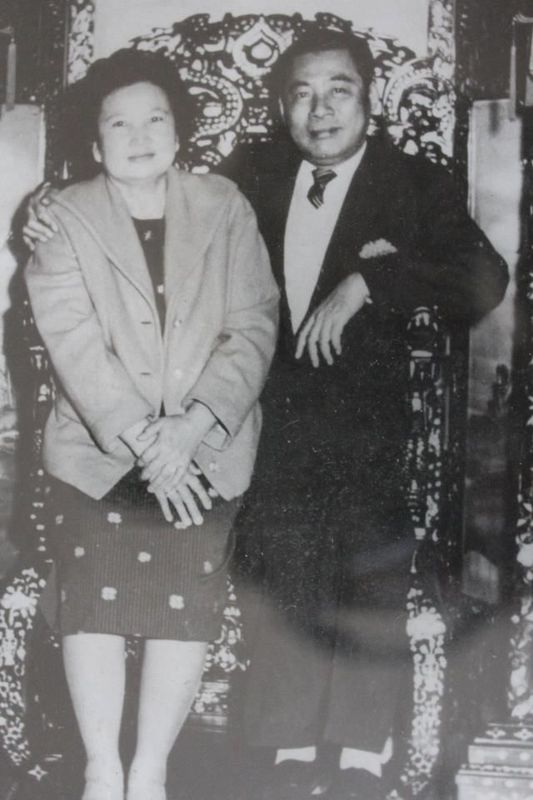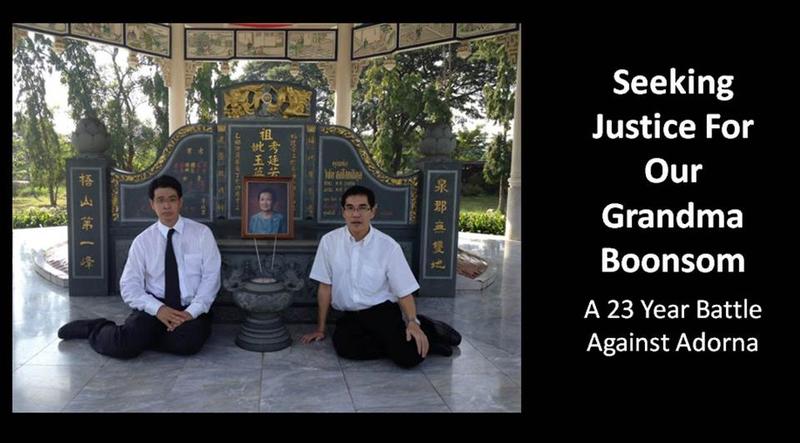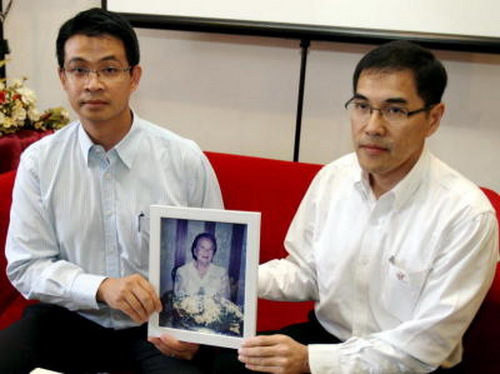

Property
How did one Thai lady leave a sinkhole in Malaysian land law? [PART 1]
over 7 years ago Denise C.Have you ever wondered how do we stake our name over what is considered the world’s most priceless possession? Nope, this article is not talking about gold or chocolate but something that everyone (almost) of us would own. In fact, it probably shouldn’t even be considered a commodity because it is a basic need of life. This article is talking about...land.
Some of you might say that it is the government’s duty and others might be perplexed because you thought that the funny lil paper commonly referred to as a “land title” would be enough to prove your ownership. Well, neither of you are wrong but a 1989 case involving a Thai lady, a RM1.8million land, a shadowy figure and the bated breaths of all lawyers in Malaysia would tell you that there is technically no way for you to assert ownership over your land.
Wait. What? If there is no way to assert my ownership, how can I be sure that some fraudster isn’t going to pretend to own my land and then sell it off? Well, that was exactly what happened to this Thai lady called Boonsom Boonyanit.
Since land law is immensely technical, we divided this article into two and you can read the technicalities of the law in the link below.
[READ MORE: How did one Thai lady leave a sinkhole in Malaysian land law? [PART 2]]
It started with an intense love for Penang

Image from Yahoo News Singapore.
It all begin with the love Madam Boonsom and her husband had for Penang (char keuy teow may or may not be part of it). They loved it so much that her husband, a Thai of Chinese origin named Sie Guan Tjang @ Sie Hang Bok bought two pieces of beachfront land in Penang and intended to build their retirement home there. In 1967, Sie then transferred these two pieces of land to his wife, Boonsom Boonyanit (also known as Sun Yok Eng) through a memorandum of transfer (Form 14A) according to the National Land Code (Penang and Malacca Titles) Act 1963 (“NLC (Penang and Malacca) 1963”).
Under section 81(3) of NLC (Penang and Malacca) 1963, Form 14A is considered to be proof of ownership of the land and the owner must hold on to it:
”The copy of the instrument of dealing referred to in subsections (1) and (2) shall— (a) take effect as though it were a conveyance or other form of pre-existing title deed; (b) be retained by the person who presented such copy; and (c) be produced by such person as necessary in any subsequent dealing.”
This means that Madam Boonsom Boonyanit is the legal owner of the two pieces of land.
She kept her Form 14A as required by the law and even faithfully paid all taxes related to her land. However, some time in 1989, disaster hit home.
On the 11th of July 1989, Phiensak Sosothikul, Boonsom Boonyanit’s eldest son was browsing through Thairat, a local newspaper, when he came across an advertisement placed by a Penang law firm that requested for anyone who had an interest in two pieces of land land located in Tanjung Bungah to come forward. Phiensak’s eyes probably bugged out at that advertisement because he realised that the land mentioned actually belongs to his mother.
Phiensak put their family accountant on the case and he discovered some very interesting points…
Will the real Madam Boonsom please stand up
Because there’s a real and fake Madan Boonsom, we color-coded the major characters in the story for your convenience:
Madam Boonsom Boonyanit – the OG and good Madam Boonsom
Mrs. Boonsom – the no good fraudster Mrs. Boonsom
Adorna Properties – the company that bought the property
Back to the story, the family accountant found out that someone had actually impersonated Madam Boonsom. Here is how the imposter did it:
- Someone who called herself “Sun Yok Eng @ Boonsom Boonyanit” had affirmed a statutory declaration (a declaration you write and affirm to be true in front of a special witness such as a commissioner of oaths) on the 18th of June 1988. This statutory declaration stated that she was the owner of the land and that she had lost the original title to it. An interesting point to note is that the passport number that appeared on the declaration was “K/P Thailand No. 000386”.
- This declaration was then used to obtain a certified true copy of the land title from the authorities.
- “Mrs. Boonsom” then affirmed a second statutory declaration on the 6th of April 1989. An excerpt from the declaration reads as follows, “the names Mrs. Boonsom Boonyanit in my International Passport No. N-033852 and Sun Yok Eng @ Boonsom Boonyanit in the said ACT (land title) in respect of the said property refer to the same and one person, that is Mrs. Boonsom Boonyanit”.
- The rogue Mrs. Boonsom then used this second declaration to register the land in the name of the purchaser, Adorna Properties.

If you are puzzled why a random land registration to Adorna Properties happened, this is why.
Sometime in late October 1988, one of the directors of Adorna Properties, a Mr. Fong Wah Tan, was approached by a Mr. Lim Chan Hwa of CA Lim & GE Tan Sdn Bhd, a firm of valuers and estate agents. Mr. Lim then asked if Mr. Fong would be interested in purchasing two pieces of land that was facing the beach. After some negotiations, a sale and purchase agreement was signed. The memorandum of transfer (a document to transfer land ownership) was signed on the 7th of April 1989 and this memorandum, registered on the 24th of May 1989. The two pieces of land was sold for RM1.8million...without the real Madam Boonsom even realising what happened.
As a matter of fact, the real Madam Boonsom was not even in Malaysia at the point in time and further, she produced evidence from the government of Thailand to state that the passport presented at the land office was a forged one.
By now, some of you would have realised what happened. A fraudster who took a forged passport to the land office had managed to convince the authorities that she was in fact Madam Boonsom and using legal declarations, had sold the property over to a third party before vanishing into thin air.
So, a fraud happened...but how does land ownership work in Malaysia?
We inherited our land law from the Down Under
The system that Malaysian land law operates under is known as the Torrens System. This system was created by Sir Robert Torrens wayyyyy back in the early 1800s when land speculation in South Australia boomed and prompted Sir Robert, the then Premier of South Australia to come up with a new system of land ownership to replace the deficiencies of the common law method of land registration.
Malaysia adopted this Torrens System through the National Land Code 1965 (“NLC 1965”).
In its barest form, there are two key concepts that the Torrens System operates by:
- The land register
- The indefeasibility of title
The land register is basically a database of all the lands in Malaysia that records who are the registered owners and any legal interests (such as charges, caveats etc.) which are on the land.
The Torrens System basically tells you that once your title has been registered, you can protect your land against any other claims that are not found on the title (indefeasibility of title). This means that if your title shows that you are the owner, a random stranger can’t come up to you and claim that he bought the land ten years ago and it belongs to him.

This was the crux of Adorna’s argument during the court case (which we will tackle in the next point), that because their name was on the land title and in the register, they have an indefeasible title to the land that trumped Madam Boonsom’s claim. They also claimed that they were not aware of any fraud and was a bona fide (genuine) purchaser for value (the RM1.8million paid) for the land (hang on to this little nugget here).
[READ MORE: How did one Thai lady leave a sinkhole in Malaysian land law? [PART 2]]
At this point, you are probably thinking that Adorna (whether they knew of the fraud or not), seems to have the law on their side because indefeasible title, amiright?
However, indefeasibility is subject to some considerations such as...fraud and forgery. Basically, when fraud happens, the NLC allows the courts to set aside the indefeasibility of title. We will explain the nitty gritty of the law here in the accompanying article but just know that since fraud happened, Madam Boonsom is arguing that Adorna’s title is defeasible (means that anyone can challenge it).
If you are cheering for Madam Boonsom because clearly someone had forged her signature and the law seems to protect her, you might want to hold up. This is where all the bated breaths of lawyers come in.
The decision of the court shocked the nation

When Phiensak informed his mother of what happened, they came down to Malaysia and lodged a police report followed by a Registrar’s caveat. A caveat is similar to an injunction except that it is filed on a land title when you have an interest in it. The presence of the caveat on the title then prevents the owner from dealing with the land in any way such as charging it to a bank, selling it or transferring it.
Armed with this caveat to prevent Adorna Properties from carrying out any transactions on her land, the actual Madam Boonsom then sued Adorna Properties and submitted a claim for the courts to declare, among other things, that the property is rightfully hers and to make an order compelling the Registrar of Titles to amend the land register to return the property to her.
We won’t go into the details of all the arguments and judgments presented in court but we will provide a brief overview of each stage. The case started in the High Court and went all the way up to the Federal Court, the highest court in Malaysia.
In the High Court, the judge decided that Adorna Properties had an indefeasible title to the land.
This means that Madam Boonsom effectively lost her property and all lawyers in Malaysia groaned because the judge’s decision basically means that no one’s property is ever safe.
But this plucky lady appealed her case and went on to the Court of Appeal. This is what happened there.
In the Court of Appeal, the judges decided that Madam Boonsom is...the rightful owner and the property has to be returned to her (yay!).
The thrust of the Court of Appeal’s decision is basically that Malaysia’s land law system confers deferred indefeasibility. This means that Madam Boonsom is entitled to her land because Adorna (even if they are bona fide), had received the property through fraud and therefore according to the NLC, they do not have the protection of indefeasibility.
[READ MORE: How did one Thai lady leave a sinkhole in Malaysian land law? [PART 2]]
This was how Madam Boonsom got her property back...did she?
Adorna appealed this decision to the Federal Court who said that…

The Federal Court agreed with the High Court and Adorna got an indefeasible title. This means that Madam Boonsom lost her property.
Sadly (or maybe thankfully), Madam Boonsom did not live to see this judgment delivered. She passed away on the 23rd of May 2000 and her second son, Kobchai Sosothikul, pressed on and filed two suits to review the decision of the Federal Court.

Yup, the battle actually lasted three generations. Image from loyaburok.com
They were both dismissed.
He further sued the Penang State Government for negligence and breach of statutory duty. Even though the judge found the Penang government guilty of said charges, the application was dismissed because it was time-barred (the legal suit was brought 36 months later than what was allowed under the law).
Today, the Infinity Beachfront Condominiums stand on what was Madam Boonsom’s planned retirement home. Adorna had sold the land over to Diamaward (M) Sdn Bhd, a subsidiary of Hunza Properties Berhad for RM13,220,000 on the 7th of October 2004.
So, Madam Boonsom passed away without getting the justice she deserved and lawyers found this to be a major loophole in the law that undermined the protection the Torrens System was meant to confer.
This means that a poor Thai lady valiantly fought her case for 10 years only to get a judgment that not only did not serve justice on her, but also left all landowners in Malaysia quaking in fear at the thought that their land will never be truly safe….
Just kidding, the courts changed the law again
In 2012, the case of Tan Ying Hong v Tan Sian San & Others appeared.
This case could be traced back to a “mysterious” occurrence back in 1976 where the Pahang State Government “mysteriously” alienated a piece of government land to Tan Ying Hong. Tan Ying Hong only became aware of the existence of this land when he received a letter from United Malayan Banking Corporation Bhd (now RHB Bank) in 1985, demanding repayment for RM300,000 being the outstanding loan sum for a loan granted by the bank to a company, Cini Timber Industries Sdn Bhd.
Upon investigation, Tan Ying Hong discovered that a conman by the name of Tan Sian San had forged Tan Ying Hong’s signature a created a power of attorney in favour of Tan Sian San in 1977. Using this power of attorney, Tan Sian San then charged the property in Pahang to the bank as security for a loan granted to Cini Timber.
[READ MORE: How did one Thai lady leave a sinkhole in Malaysian land law? [PART 2]

It is clear that while the facts are not entirely the same as Madam Boonsom’s case, the crux of the case is the same. In other words, it also relates to the issue of fraud and indefeasibility of title.
Tan Ying Hong the question that was posed to the Federal Court in Tan Ying Hong’s case was whether the law established in Madam Boonsom’s case had to be followed.
This was what the court said...
The judges overturned the established principle in Madam Boonsom’s case and closed the gap in the law by setting out that the concept of indefeasibility in Malaysia is one of deferred indefeasibility.
[READ MORE: How did one Thai lady leave a sinkhole in Malaysian land law? [PART 2]]
This means that landowners in Malaysia can rejoice as they now have protection against the loss of their lands through fraud.
At the end of the day, Madam Boonsom may not have had her chance at justice but at least, her case brought to light the nuances that the law has and how a single word could change an outcome. We may think that lawyers are being overly pedantic and playing into semantics when they include certain words in legal documents. We may even think that they are trying to milk us for money by drafting terribly long and circuitous clauses but in actuality, the case of Boonsom has shown us how the courts dissect everything down to minute details.
Most importantly, it showed us how complicated land law is in Malaysia and thankfully, how courts in Malaysia can take the necessary actions to amend the law when they see fit.
"No no I clean"